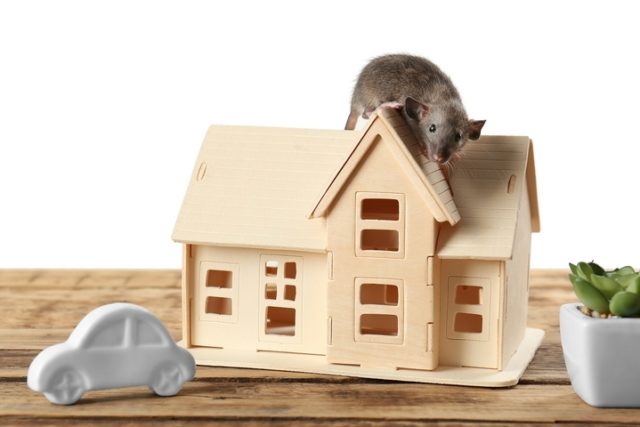If an organism appeared in your house or property that resembles a rodent, you might want to know what it is you are dealing with. This is because some of them pose health risks to humans. It’s essential to know the type of rodent you are dealing with whenever a need to exterminate them arises. Understanding the kind of damage they leave behind is critical in developing a pest control removal and prevention plan.
The following are six types of rodents that might enter your home.
1. Rats

Rats have plagued humans for a long time. They are responsible for the Black Plague of the Middle Ages and other numerous diseases associated with them. There are diverse rat species. Among their characteristics include long hairless tails and a length of about 9 inches. They weigh up to 2lbs and have large white teeth.
These types of rodents also have a gray or brown fur coat and a white underbelly. Rats are generally larger than mice. Their continuously growing teeth force them to keep chewing on substances found in a home to keep them in control. Their presence in a home is evidenced by 20mm long capsule-shaped droppings.
2. House Mice

A house mouse is known for its large ears, broad hairless feet, short fur, pointy nose and a scaly tail. They are extremely shortsighted; hence, they tend to stick close to their getaway. Other than scattered droppings, which are rod-like with pointed ends at 3-6mm in length, their presence is noted by low dirt/mud smudges along walls.
Mice are great jumpers and climbers, and highly athletic. They love dark, secluded places for nesting. They will share and build nests using soft items found in a house. You’ll find them behind refrigerators and stoves.
3. Norway Rats

They are brown in colour and are arguably the most common rodent species in the world. You can find them in every continent except Antarctica. They thrive in all climates except that of Greenland, NE Canada, and most parts of Russia and select islands. They are also known as street rats, common rats, sewer rats and wharf rats. They stalk humans in nearly every major town and city, infecting them with disease and pestilence as they search for shelter and food. They carry diverse pathogens such as bubonic plague, Weil’s disease, typhus, trichinosis and toxoplasmosis.
They are known to carry parasites and contaminate and damage food with their waste. They chew at wiring insulation, causing electrical fires through short-circuiting. They have a preference for damp environments. They enlarge gaps in the foundations of buildings, walls, attics, plumbing and sidings.
These types of rodents are nocturnal. A daytime sighting is a sign of a large infestation. Although they are omnivores, cereals constitute a large chunk of their diet. To keep them away, store water, food and garbage in containers with tightly-fitting lids. Don’t litter bird feeders with seeds, and at the first sighting of rats, remove bird feeders. Prune and trim trees to prevent contact with your building. Seal all holes around your windows, doors and roof.
4. Pack Rats

These types of rodents are also known as woodrats. They have brownish-grey fur with a light-coloured underbelly. They have long whiskers and large eyes and are about 30cm in length, which includes a tail that accounts for half their length. They are known to steal and store trash, household items, including metallic objects such as jewelry, keys and coins. Their feeding and nesting habits are problematic for homeowners.
They rip mattresses and furniture apart to obtain soft materials for their nests. Signs of home infestation include missing shiny objects in the home, gnaw and greasy rub marks appearing on surfaces, trails of droppings, trampled grass and nests. Packrats love outbuildings such as sheds and barns.
An exterminator using baits and traps is effective at dealing with an infestation. Sealing holes in the foundation of your home, rodent proofing your attic and roof prevents pack rat invasion. They have a lifespan of 3 years and reach maturity within one year. They have a gestation period of 4 weeks and nurse their young ones for 4 weeks. They have litters of 2 to 3 babies at a time. They breed in spring, and their typical diet comprises of fruits, seeds, vegetables and nuts. However, when they invade a home, they specialize in eating stored grains and cereals.
5. Deer Mouse

The deer mouse is six-inches long and is a reservoir of the deadly Hantavirus. It has a brown to a grayish fur coat and a white underbelly. It has large eyes, ears and feet and a white furry tail. Deer mice are active all year. Like the tree squirrel, they store food in winter. Their typical diet comprises seeds, nuts, insects and berries. When outdoors, they live in hollow tree cavities, under logs, in stumps or in abandoned bird nests. Several times in a year, they produce 2-7 litters.
Although these types of rodents live in rural areas, in colder months, they frequently enter homes, storage sheds, garages and stored campers. In their wake, they inflict considerable damage to furnishings, upholstery and foodstuffs in unoccupied summer dwellings. During the winter, deer mice store food, just as tree-squirrels do, and are active throughout the year.
6. Roof Rats

They have a smooth brown and black fur coat and measure about 40cm in length. They are also referred to as black rats, house rats, ship rats, old English rats and Alexandrine rats. They are known to host serious diseases. Signs of invasion include sightings of gnawing and chew marks on electrical wiring, tiny pellet-like droppings, and holes and rub marks on walls.
These types of rodents are omnivores with a large selection of food, from cattle feed to native birds. Their invasion is a threat to natural habitats. They devour crops in the field and are prolific breeders, producing up to 40 offspring in a year. Black rats are common to Canadian seaports and coastal communities. They exhibit neophobic tendencies, unlike the house mice.
Other than poor eyesight, they have an excellent sense of taste, touch, smell and hearing. Black rats are highly athletic. They can travel distances of 90 metres in search of food and water. They are excellent at climbing and running, which contributes to the fact that they make their homes in high places such as on trees and roofs. They are equally good at burrowing through dense vegetation.
Black rat invasion prevention strategies include making sure food preparation areas are clean. To keep them away, rotate and clean dumpsters regularly, remove food sources such as bird feeders and keep trash cans tightly covered. Besides, trim vegetation away from your building exterior, and seal all holes and cracks using foam or caulk.






